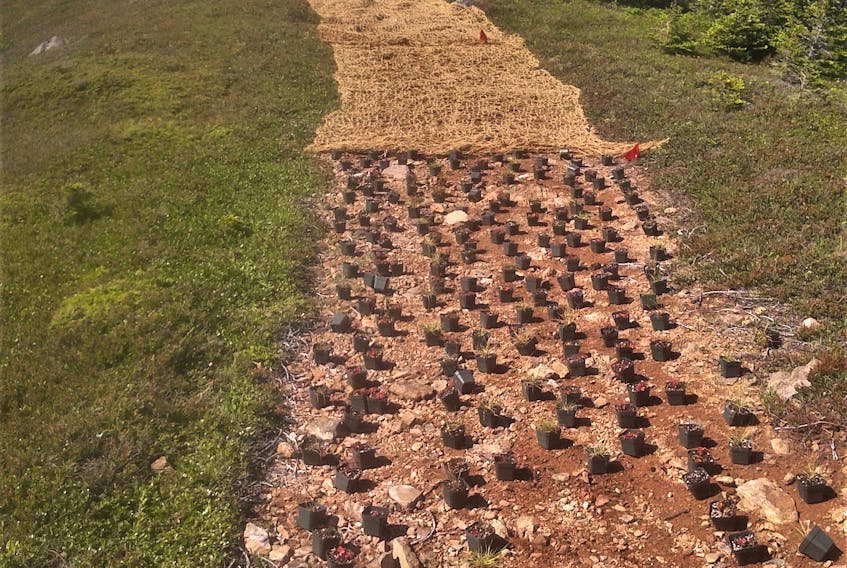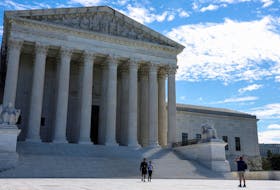CHETICAMP, N.S. — Skyline Trail hikers may want to capture natural beauty from every angle but Parks Canada conservationists say visitors are actually causing damage to a delicate ecosystem.
By stepping off the trail’s wooden boardwalk and platforms, hikers are trampling rare plants and vegetation found on French Mountain.
“My sense is nobody is going there to purposely cause harm,” said Anne-Claude Pépin, acting resource conservation manager for the Cape Breton region.
“They’re just going to see what they can see, but where the platform was actually positioned … it’s the place for the best view.”
Parks Canada says there have recently been problems with visitors venturing off at the end of the trail into the Skyline headland.
The area contains rare habitat that can be found in Cape Breton only in this one spot.
“It’s one of the most iconic trails and its sees almost 50,000 visitors a year,” said Pépin of the 6.5-kilometre hike, near Cheticamp.
“It’s really tempting to see if you can go further… but because the vegetation there is very sensitive to trampling, what happens is some plants die — the roots get exposed — and then you lose more soil around the roots due to wind erosion and rain erosion.
“It starts creating this unofficial trail of compacted soil, and then the vegetation doesn’t get a chance to recuperate and the area that’s impacted gets larger and larger.”
Pépin said some visitors are also putting themselves at risk by getting too close to cliff edges that look onto the Gulf of St. Lawrence.
As part of its efforts to increase awareness about the loss of habitat, Parks Canada is using a few approaches.
First it is trying to educate the public through social media, signage and by increasing its staff presence.
Secondly, it is taking steps to rehabilitate the degraded vegetation on the Skyline headland through a partnership with Saint Mary's University.
Pepin said if the problem persists, Parks Canada will instead have to rely on law enforcement.
“We’re hoping by informing people that most will be on board or understand why it’s important not to go beyond the boardwalk,” she said.
“It’s about finding that balance between a good positive experience and enjoying natural places, but yet preserving them.”
She said some of the plants that exist in the area are bearberries, juniper, golden heather and wild blueberries.
Cape Breton Highlands park is open year-round, but full visitor services are only available from mid-May until mid-October.









